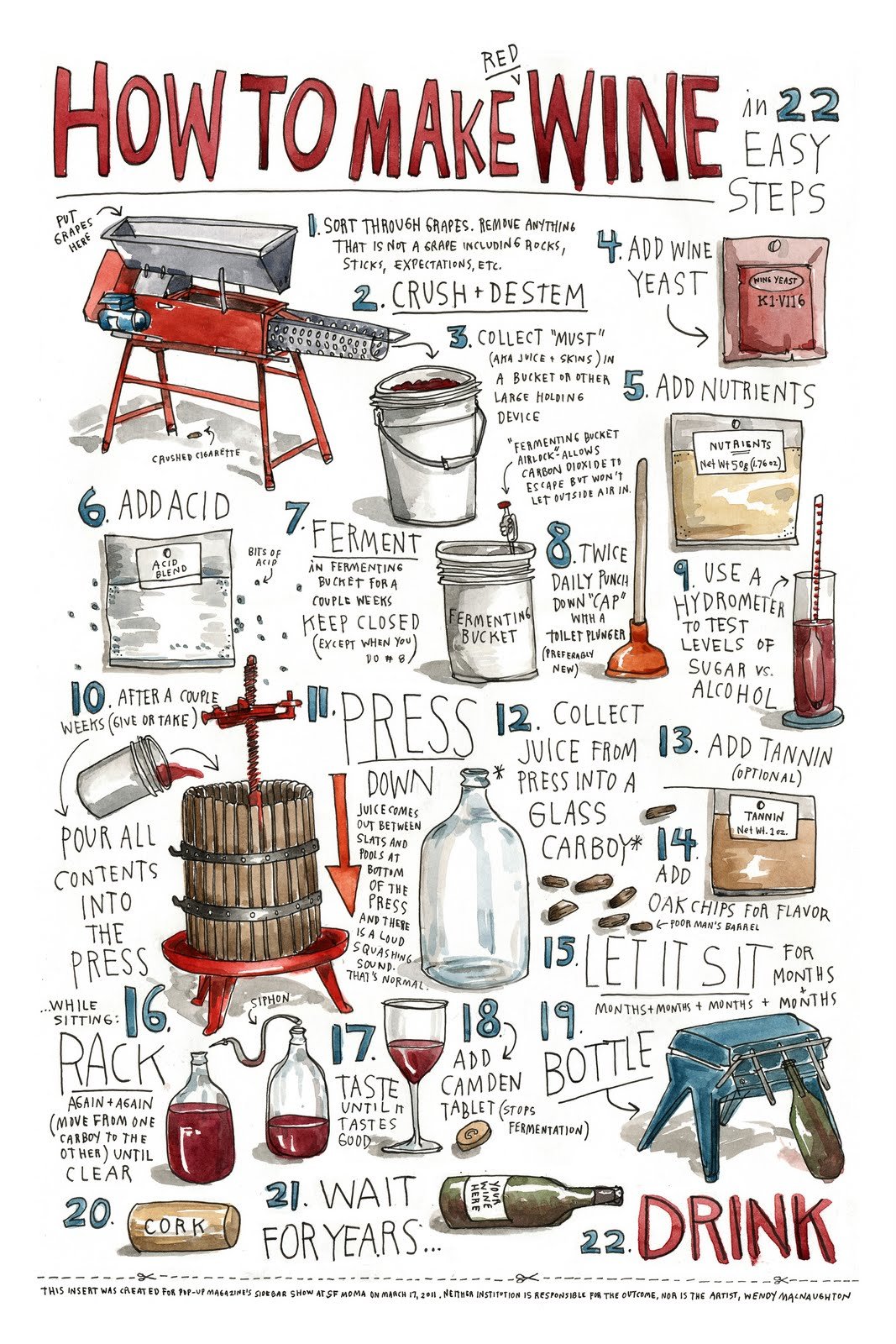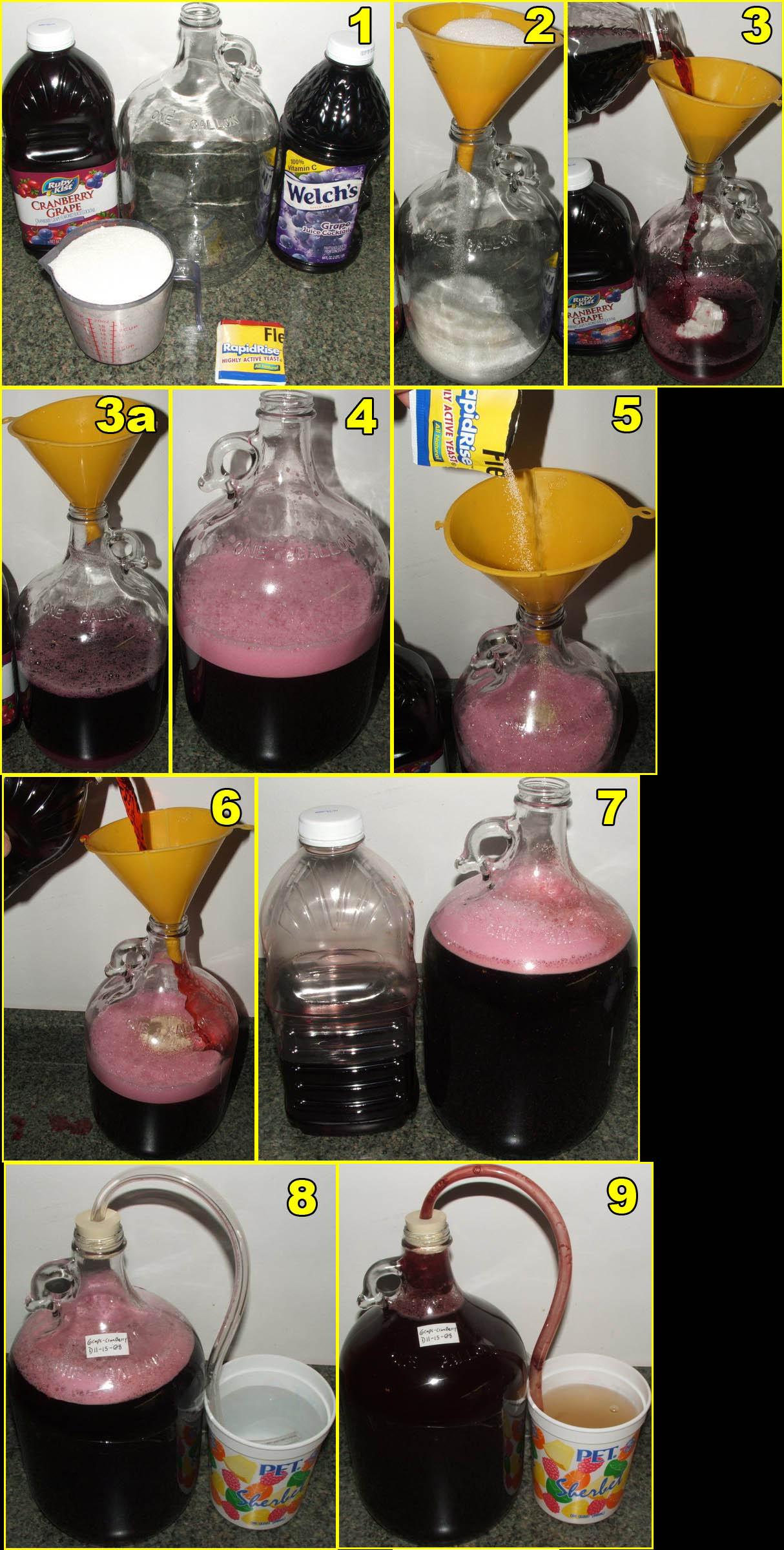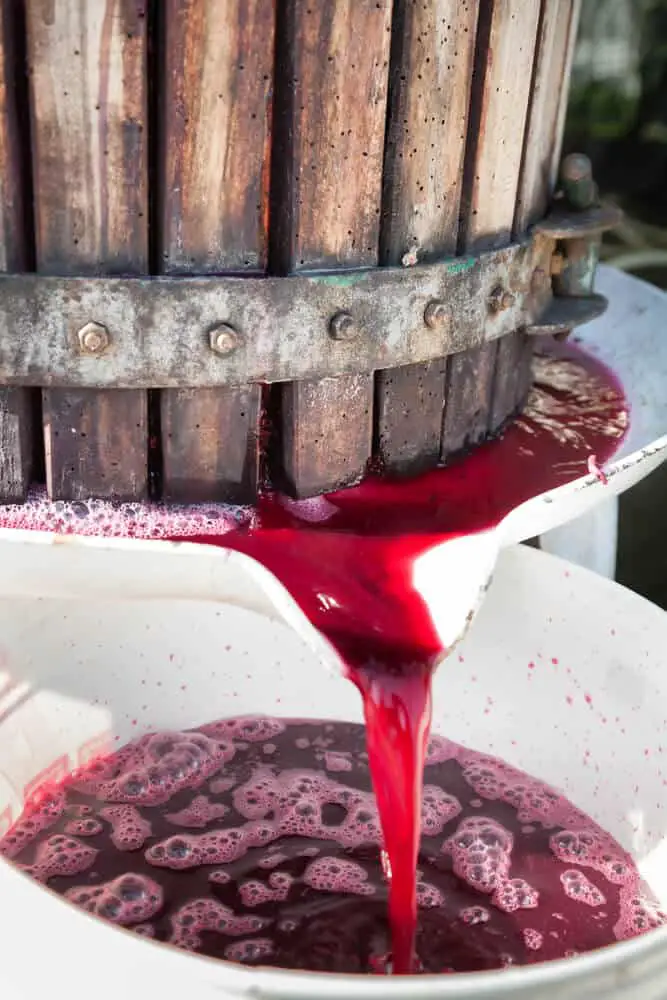How To Store Your Wine
When you want to age your wine it needs the right environment to have the most successful aging process. Here are some general guidelines on how to properly store your wine:
- Dark. Keep your aging wine bottles away from sunlight, as it can damage the content of your wine
- Cold. Wine needs to be stored cold, which is why basements are often used as they have a rather constant temperature and humidity which can be fitted perfectly for wine aging.
- Wine Fridge.If you have no basement, using a fridge with set temperatures is a good alternative. The downside of this is that if using cork bottles, you wont get as much fresh oxygen into your bottle as if you just have your bottles aging freely in a basement. Check out some great examples on this article.
- Right Temperature. The general guideline is to keep the room or fridge you are using for aging your wines at 55F to 60F.
Read also: Find the Best Dual Zone Wine Cooler
How To Make Wine From Almost Any Store
- 2057
- 11011
I got my start in homebrewing in the middle of the desert. I was stationed in Saudi Arabia during Operation Desert Storm, and alcohol of any form was prohibited. On a whim, we decided to try making our own wine. I really didnt know the actual technique beyond a vague ideayour take fruit, water, sugar, and yeast, let it ferment for some length of time , and you had wine .
So I combined several packages of freeze-dried fruit from our MRE packages, some sugar, and bread yeast. I rigged up an airlock with a piece of medical tubing, duct tape and a water bottle. After a couple days it was bubbling, so it must have been working! I gave it probably a week or so, then strained it through some mosquito netting. I dont think Im a good enough writer to capture the unique taste that resulted from this whole process, Ill just leave it to your imagination!
Watch The Fermentation Magic
Test the sugar levels of the fermenting juice periodically with a basic hydrometer in a graduated cylinder. Its measured in degrees Brix, which equals sugar percentage. Your juice will start out between 1826 degrees Brix, and it will reduce to minus-2 Brix once fermentation is complete.
White wine fermentation lasts several days to several weeks, and it depends a lot on temperature. The cooler the room, the longer it takes. Red wine that reaches a good, warm temperature during fermentation should be done in a week or two.
Once fermentation is complete, separate the new wine from the gross lees of fermentation. Pour the wine into a five-gallon carboy to mature.
For white wine, use tubing to siphon off the juice and leave most of the lees behind to dump out. Elevate the fermentation container at least two feet above the carboy in which you will age it. Start the flow using your mouth for suction, and gravity will do the rest.
For a red, transfer the juice to a carboy and then press the skins to squeeze out any remaining juice. Add this to the carboy as well, and top it with an airlock.
Also Check: Is Red Wine Vinegar Keto
Nonstick Cookware Done The Right Way With Greenpan
Make sure your fruit has been in the freezer for at least three days before beginning the process. Bring your water to a boil and add the sugar. Take the fruit out of the freezer, place in a three gallon crock while you are waiting for the sugar water to boil. CAREFULLY pour the boiling sugar water over the frozen fruit in the crock. Avoid any contact with skin it will burn badly.
Stir the fruit and sugar water mixture and cover with a cloth and lid or large plate. Do not let any fruit flies into your wine, or it may turn into vinegar.
The next day, mash the berries with your hands, stir in your yeast thoroughly, and cover with a cloth and lid. Keep stirring the must in the crock once a day for a week, after which you will be ready to transfer it into the glass jugs.
Place a funnel in your jug, a fine mesh strainer on top of the funnel, and begin ladling the must into the jugs, separating the fruit pulp from the liquid. Leave at least four inches of headspace, and cap with an airlock, which allows oxygen out but nothing into the bottle. Place the bottles out of the direct sunlight where they will not be disturbed.
Related on Organic Authority
When To Harvest Grapes For Homemade Wine

The best moment for harvesting the fruit for homemade grape wine is the end of September. Of course, its a generally established time, so take other aspects, such as weather conditions and the fruit ripeness into consideration. If the temperature is moderate and the weather is dry – it is the best moment.
Also Check: Where To Buy Shaoxing Rice Wine
A Carboy For Secondary Fermentation:
This is simply a big ole glass jug! We brew almost exclusively in one gallon batches at our house, so we have an entire fleet of one gallon carboys. You can purchase them in a bundle with an airlock and cork. They also come in much larger sizes if you want to do big batchesfive gallon is a common carboy size. The shape of the carboy is importantthe narrow neck reduces the surface area of wine exposed to oxygen during secondary fermentation, which is good!
A Primary Fermentation Container:
This should be a big bucket, a large jar, a crock, or specifically designed fermenterwhich is what we use and will be showing in this post.
The size is important. I recommend it be at least 40% bigger in volume than what youd like your final amount of wine to be. Why? Because your primary fermentation will have fresh fruit in it, which well later filter out. Also: during the initial fermentation, the yeast can get quite overzealous, and youll need room for all the bubblesplus, extra room gives the yeast extra oxygen to work with! The strawberry wine recipe below is for a one gallon batch, so your primary fermentation container needs to be at least 1.4 gallons in size.
Also Check: Red Wine Stain On Tablecloth
How To Harvest The Fruit For Grape Wine
To get a really good homemade grape wine, one needs to properly harvest the fruit intended for the beverage.
The grapes have to be ripe, but not overripe, otherwise they wont taste good. Large, juicy fruits are the best ones.
The most important aspect of harvesting the fruit for homemade wine is sorting. At this stage, remove any grapes with stains, signs of rotting or damaged skin on a larger area.
How To Make Wine From Grapes At Home
Grape wine is very easy to make at home. In most cases you need only several ingredients, apart from the fruit: yeast, yeast nutrient, sugar and water. When using a simplified wine recipe, you can limit the ingredients only to grapes, sugar and water.
Dorota is an economist by profession, but her biggest hobby is photography and interior design. In Treehouse since the beginning of 2019.
Don’t Miss: Red Wine On White Shirt
How To Make Wine At Home Is It Difficult
Are you wondering whether one can make good grape wine at home? It is, in fact possible, and whats more – its very easy. It might not seem so, but you dont need any special experience or knowledge. All you need are the recipes we have gathered for you, several products such as sugar and yeast and basic equipment – a jug with tube or other vessel in which the fruit can ferment.
If you dont have a carboy and choose another container, remember that it needs a special construction so that you can insert a tube in the upper part. It is very important so that the process goes smoothly.
Can Homemade Vodka Get You Drunk
The fermentation process creates a vodka with only about 16% ABV, which is way too low for spirits. But youre going DIY, so that means you can make the extract stronger by putting it back in the distillation setup to minimize alcohol loss. You can perform tweaks and make it on par with commercial vodkas at 40% ABV or stronger.
Recommended Reading: How Many Ounces In A 750 Milliliter Bottle Of Wine
How To Make Heavenly Homemade Wine
Making homemade wine from fruit is simple, enjoyable, and worth every last sip. A colorful and tasty addition to any wine rack, fruit wines also make fantastic culinary ingredients for sauces, marinades, salad dressings, and even some desserts. Although making fruit wine is a time intensive process, it makes vinting accessible to those who cant care for a vineyard or vint grape wines.
Homemade fruit wines make great gifts and provide exotic flavors that are bound to intrigue dinner party guests. So choose your fruit and let the fermenting begin!
When making homemade wine, frozen fruit is required for clean flavors, so this recipe can be made year-round. If you have fresh fruit, freeze it for at least three days before beginning the winemaking process. The initial process involves pouring boiling sugar water over the frozen fruit, which kills any bacteria, foreign yeasts, and unwanted flavors. Most winemaking guides will advise using sodium or potassium metabisulphite for sterilization at this stage, however, to make a completely natural, sulfite-free and organic wine, the freezing/boiling method works effectively.
What Does The Yogurt Button Do

The yogurt button has two functions: first to heat to 180 degrees to kill harmful bacteria, and second, to maintain a constant moderate temperature for fermentation to take place.
For winemaking, we are interested in this second step. That is why in the recipe, you hit less after you hit the yogurt button to skip the first step.
You May Like: How To Get Wine Out Of A White Shirt
Racking And Secondary Fermentation
Once the primary fermentation has slowed down, its time to strain out the fruit and rack the wine into a carboy.
This Is How Long It Takes To Make Wine
Making wine is a very interesting hobby to adapt, but how long does it actually take to make wine?
This blog post is what i learned about making wine at home.
How Long Does it Take to Make Wine at Home? 2 months is the minimum time taken from start to finish until you can drink your homemade wine. However, most, if not all winemakers will highly advise against drinking your wine after just 2 months. The longer you let your wine age the better the taste will be.
Read through this blog post as I dive into the minimum time taken to make wine, and why you shouldnt do it!
I will also dive into the equipment needed for homemaking of wine as well as give you a simple guide to delicious homemade wine!
Read also: Wine Making Kits For Beginners
Also Check: Gluten Free Wine Brands
So How Do You Actually Make Wine
A simple wine fermentation involves adding yeast to a mixture of fruit, water and sugar. Then the yeast eats the sugar, turning the mixture into approximately half alcohol and half carbon dioxide.
For example, if you had a gallon of juice with 2 pounds of sugar in it, and let the yeast consume it all, you would end up with a gallon of wine that had about 1 pound of alcohol in it.
Of course this isnt exact, you probably wont get exactly a 50/50 mixture of alcohol and carbon dioxide, but its pretty close. And you dont necessarily need to pour in all that sugar eitherthe fruit that you start with will have sugar of its own.
How To Make White Wine:
- Remove the stems from the grapes and rinse them. Put them in a large bowl and refrigerate for an hour. Then pour the fruits to the vessel in which you are going to make the wine.
- Pour water and sugar to a separate container and mix thoroughly until the sugar dissolves. Pour the solution to the jug with the fruit.
- Another step is adding the yeast and the nutrient. Both of those ingredients are powdered, so spread them evenly in the container.
- Cover the jug with a special lid with a tube and set the container at a warm spot, where its going to spend about a month.
- After this time, strain the wine out and pour it into a bottle. Add 3-4 raisins. After a week the wine ise ready for consumption.
You May Like: Is Red Wine High In Carbs
How To Make Homemade Wine The Easy Way
If youre new to making wine, a quick and easy method is making wine from fruit juice using frozen juice concentrates. Simply check in your grocers freezer section to find a wide variety of frozen juices. This recipe can be adjusted for any type of juice or juice blends.
Its fun to experiment with different flavors, but if you do, always make sure that you like the taste of the juice blend itself before you try to make it into wine. If it tastes bland or strange as juice, it will taste even more so once it becomes wine.
Check the ingredients list for preservatives. If it has preservatives, it wont ferment. If it doesnt ferment, you wont get wine.
Another thing to check for is chemicals. You want a juice concentrate that is 100% juice. Some juices have added vitamin C . This will work fine. Try to avoid any other chemicals for a better tasting wine.
How To Make Wine At Home
How long does it take to make a wine?Can I make wine that is as good as store bought brands?many wine recipe kitsWinexpert Is making wine at home expensive?basic homebrewing equipmentcomplete Equipment KitsWinexpert kits
- Juice Bag: The grape juice has all the fermentable sugars that the yeast feed on to make alcohol. The vast majority of the wines flavor and complexity is also derived from the grape juice.
- Wine Yeast: 1-2 Yeast packets depending on the kit. Yeast is what eats and converts the sugars to alcohol.
- Oak: In select kits, you will find packets of oak. Oak will impart beneficial flavors and colors into the wine. Oak also helps to balance some of the rich flavors found in wines like chardonnays.
- Bentonite: This is a fine clay in powder form that helps clarify the wine during fermentation
- Metabisulfite: Stops yeast action and is used in stabilizing the wine before clarifying. Metabisulfite can also be used as a sanitizer for winemaking equipment in higher concentrations. Your kit will not include enough for use as a sanitizer but can be purchased from AHS if desired.
- Potassium Sorbate: Stops all remaining fermentation action and fully stabilizes the wine. Sorbate is used in conjunction with metabisulfite for wine stabilization.
- Finishing Fining Agent: Depending on the kit this will be either an isinglass pack or chitosan pack. Like bentonite, these agents help clarify the wine into the sparkling beauty you sip from your glass.
Read Also: How Many 1oz Shots In 750 Ml
How Wines Are Coloured
Wines normally get its colour from the skin of grapes. White wines are made in two ways: one being only with the juice of white grapes. This juice is generally colourless. The second type is made with a mixture of black and white grapes. The skins of the black grapes are removed soon enough before it can leave any pigment to the wine.
Red wine is made by keeping the skin in contact with the juice for a longer time. The skin also gives wine tannin which is a natural acid.
Rosé wines get its colour when the skins of the black grapes are left in the must for sometime until it imparts the necessary colour.
What Happens If You Bottle Your Wine Before Its Done Fermenting

You might make little wine bombs! If the wine is still fermenting when you bottle, itll keep producing carbon dioxide, which will eventually build up to a point in the bottle where it needs to escape. When it gets there, the bottle might pop its cork, pop off its flip-topor in the worst case scenario, break the glass of the bottle. You can prevent this by making sure the wine is still and finished fermenting before bottling or by sterilizing the wine with Campden tablets before bottling. I personally like to live on the edge, so I never sterilize my wine , and occasionally, I open up a nice carbonated bottle!
Read Also: Shipping Liquor To North Carolina
How Do I Make A Dry Peach Wine
The sweetness of your finished wine comes down to both the amount of sugar you add and how much sugar your wine yeast can eat. Different strains of yeast eat different amounts of sugar and live to a higher alcohol contenta yeast that can tolerate a higher alcohol content will typically give you a drier wine.
When you are just starting out, I recommend starting with 2-3 pounds of sugar and a yeast that has an average alcohol tolerance. With a 14% alcohol tolerance, Red Star Premier Blanc is a great yeast for a semi-dry wine for beginners, and you can sweeten to taste from there.
For a sweeter wine, add more sugar with the same yeast during the winemaking process, or add a simple syrup just before serving.
For a drier wine, use less sugar with the same yeast during the winemaking process, or choose a yeast with a higher alcohol tolerance.
